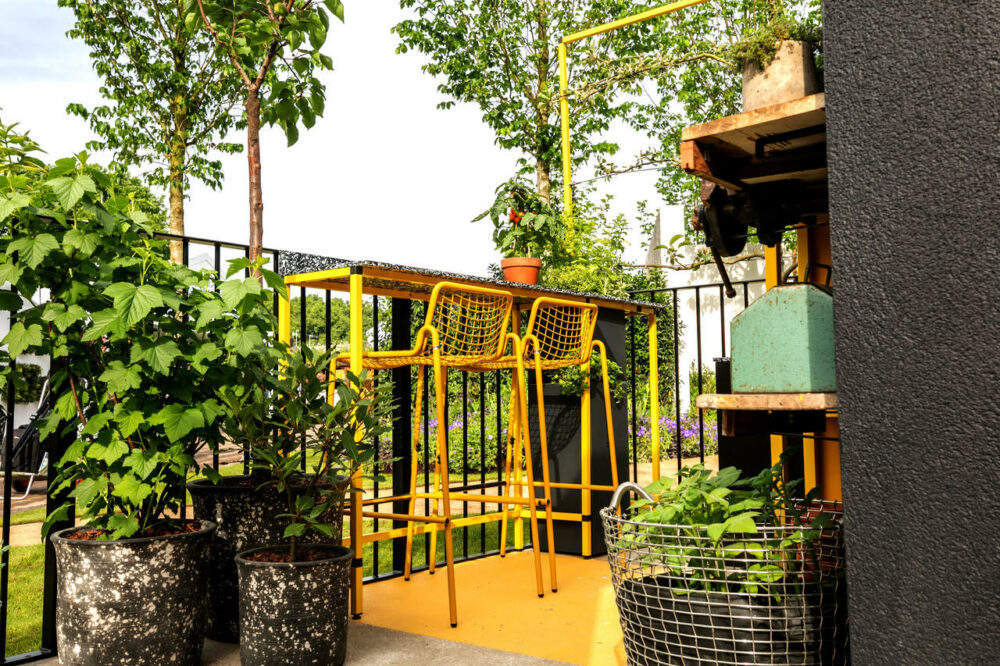For city dwellers, gardens can be hard to come by. But balconies? They are easier to find – and, post-pandemic, our ambition for our outdoor spaces has never been higher. With attention firmly focused on every last inch of exterior real estate, balconies and roof terraces have become so much more than viewing platforms or places to plant potted herbs.
Shifts in thinking when it comes to urban planning, an increased emphasis on wellness and changing interior-design trends are combining to remodel our outdoor spaces and create gardens in the air – and autumn/winter is a great time to address a new scheme. Balconies and terraces are increasingly becoming homes for air-purifying plants in the urban environment, bringing mental-health benefits with them. At the same time, the integration of outside spaces into interior-design schemes is enabling city residents to stylishly extend compact living spaces in capitals such as London and Paris.
In Italy, urban greening has been going vertical for some time. Balconies in its design capital, Milan, have long been packed with plants, but in 2014 Stefano Boeri integrated 20,000 trees, shrubs and flowering plants into the exterior of two towers in the Isola area, dramatically increasing CO2 absorption and reducing dust, heat and noise for residents.
Integrating vegetation into our façades is not just good for our physical wellbeing. Taking time out in nature has documented mental-health benefits – a point underlined by the London-based designer Will Murray at this year’s RHS Chelsea Flower Show, where he won a silver gilt medal for his entry, The Potting Balcony. Murray wanted to showcase practical ways to propagate plants in small spaces. “There has definitely been a shift towards people being more interested in creating green spaces,” he says. “Once they see how satisfying and calming gardening can be, they tend to get the bug.”
The Potting Balcony shows how even the smallest high-rise space can be made chic with customised planters on wheels and a flexible layout. For serious cultivators, Murray recommends the British start-up Harvst: “They make smart watering systems and mini greenhouses that can be controlled via an app and connected directly to a water supply. You can tell the system to water your plants from wherever you are in the world.”
If garden design seems daunting, Murray has practical solutions. “Paradoxically, in small gardens, having a few large statement plants always looks better than lots of small pots,” he says. “It helps to make the space feel bigger.” Self-watering pots make care simpler, too.
For those seeking style in their exterior spaces, the trend for unified design inside and out has led to an upgrade in the flooring and furniture available for balconies and roof terraces. Tiling companies such as Florim make the transition seamless with all-weather flooring. And outdoor furniture is no longer flimsy and foldaway – instead it has the finish you’d expect from indoor pieces. Companies such as Fast and Cassina offer impeccable designs in hardy ceramics, treated hardwoods and hi-tech textiles, all engineered to withstand the elements.
The new Cassina Parasol sunshade can be cantilevered out to form a temporary roof. For stylish cordless lighting, try the Danish firm &Tradition, London-based Tala and French company Petite Friture. And Tom Dixon’s latest furniture in toasted cork is light enough to lift and durable enough for outdoors as well as in. It’s time we viewed balconies not as an underutilised space, but as the green room we didn’t know we needed – until now.
Pictures from top: Bosco Verticale in Isola, Milan (Unsplash); a garden design by It Will Grow (William Murray); Outside No 39 show garden; a balcony scene with Fast ceramics; an urban balcony garden (Alamy)






